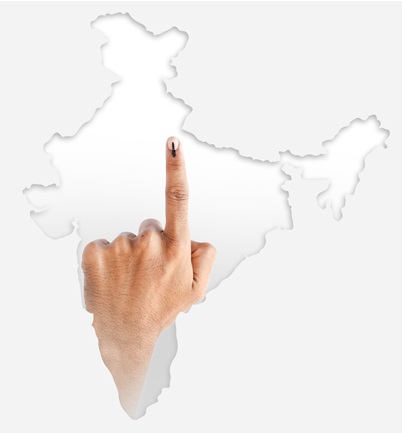Dec 23, 2025
Dec 23, 2025
 Now that the national six-week boisterous election process amidst searing summer — high-pitched rhetoric by the political parties to propagate their programs as the best to serve the marginalized/to usher in socioeconomic transformation, leaders shaming each other with accusations such as narcissism/illiberalism/racism/bigotry, etc., and of course, each of them yet promising to protect the constitution — has come to an end, and a new government is likely to be in place soon, it is time for the nation to debate dispassionately as to what the new regime should aim at to lead the country towards economic growth amidst the ongoing deglobalization.
Now that the national six-week boisterous election process amidst searing summer — high-pitched rhetoric by the political parties to propagate their programs as the best to serve the marginalized/to usher in socioeconomic transformation, leaders shaming each other with accusations such as narcissism/illiberalism/racism/bigotry, etc., and of course, each of them yet promising to protect the constitution — has come to an end, and a new government is likely to be in place soon, it is time for the nation to debate dispassionately as to what the new regime should aim at to lead the country towards economic growth amidst the ongoing deglobalization.
First things first: Growing at an annual rate of 6-7%, India has of course, already become the fifth-largest economy and is expected to become the third largest by 2027. Its clout has undergone a dramatic change in the recent past: American companies have 1.5 million staff in India—the highest number outside the US. India has the world’s fourth most valuable stock market.
A research report brought out by Goldman Sachs labelled India as “the emerging services factory of the world”. It projected India’s service exports to rise to $800 billion by 2030, which is, of course, a tad lower than the target of $1 trillion set for both services and merchandise exports by its government. As the global trade in services is still growing, Indian IT companies have successfully sold themselves as global capability centers (GCCs) offering R&D services to multinational companies.
This emerging trend is likely to pave the way for a new wave of services-led growth for India, over and above what has already been accomplished: Wizmatic, a consultancy firm from Pune estimates revenue from such GCCs as high as $120 bn. According to the Goldman Sachs report, India enjoys a share of 4.6% of global services exports, while its goods exports hardly account for 1.8% of global merchandise trade.
Taking forward the agenda of the liberalized economy launched in the 1990s and 2000s, the previous government attempted to create an efficient, transparent and single domestic market by introducing GST and also giving a thrust to revenue collection.
As an obvious extension of these happenings, the government also tried to take advantage of the ongoing US-China trade war and its impact on the supply chains in China by working to tilt the balance of India’s growth toward manufacturing activity through modernizing country’s infrastructure with extensive budgetary support and even offering subsidies for foreign companies to base their production centers in India.
Despite all these developments, India faces a daunting task. Its economy must generate massive employment not only to sustain its growth but also to reduce the prevailing phenomenon of low levels of human development and high levels of inequality. It is worth remembering here that the Human Development Report 2023-24 published by the UNDP, placing India’s Human Index Value at 0.644 as of 2022, ranked it 134 out of 193 countries.
This UNDP report places India behind Bhutan, Bangladesh, Sri Lanka and China. The report also raises concerns about rising inequality and its impact on human development. Indeed, the World Inequality Lab study reports that “the top 1% earn on average of 53 lakh per year, 23 times more than that of the average Indian”. This stark difference in income levels is certain to impact aggregate demand and consumption, which in turn adversely impacts human welfare.
That aside, the recently released India Employment Report 2024 developed by the Institute for Human Development issued in partnership with the International Labor Organization revealed that “educated youth (in India) have higher rates of unemployment, reflecting a mismatch with their aspirations and available jobs”. It also points out that “technological change and digitalization are rapidly affecting the demand for skills, which will continue to impact young people in the Indian labor market”.
These findings are indeed a subtle pointer to the fact that it is imprudent to take India’s services growth for granted. The new government may have to therefore take cognizance of the suggestions made by the report viz., one, promoting job creation; two, improving employment quality; three, addressing labor market inequalities; four, strengthening skills and active labor market policies; and five, bridging the knowledge deficits on labor market patterns and youth employment.
The path for the new government to tread is thus well laid out: giving primacy to human development and through it accelerating growth. So, political parties, irrespective of their status—be it the party in power or the opposition—must come together to think beyond their political agenda and draw a new growth strategy, be it for promoting manufacturing or services growth, that simultaneously addresses the twin objectives of economic growth and human development.
To ensure human development, one of the most important and urgent needs is: Investment in education and skill development. That alone can pave the way for bringing down the inequalities prevailing in society appreciably. Along with it, political parties must also draw a plan to steer the country out of the folly of freebies by focusing all their energies on improving the productivity of the masses.
Image (c) istock.com
08-Jun-2024
More by : Gollamudi Radha Krishna Murty